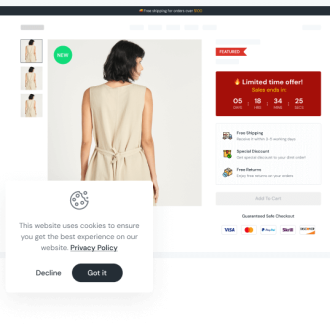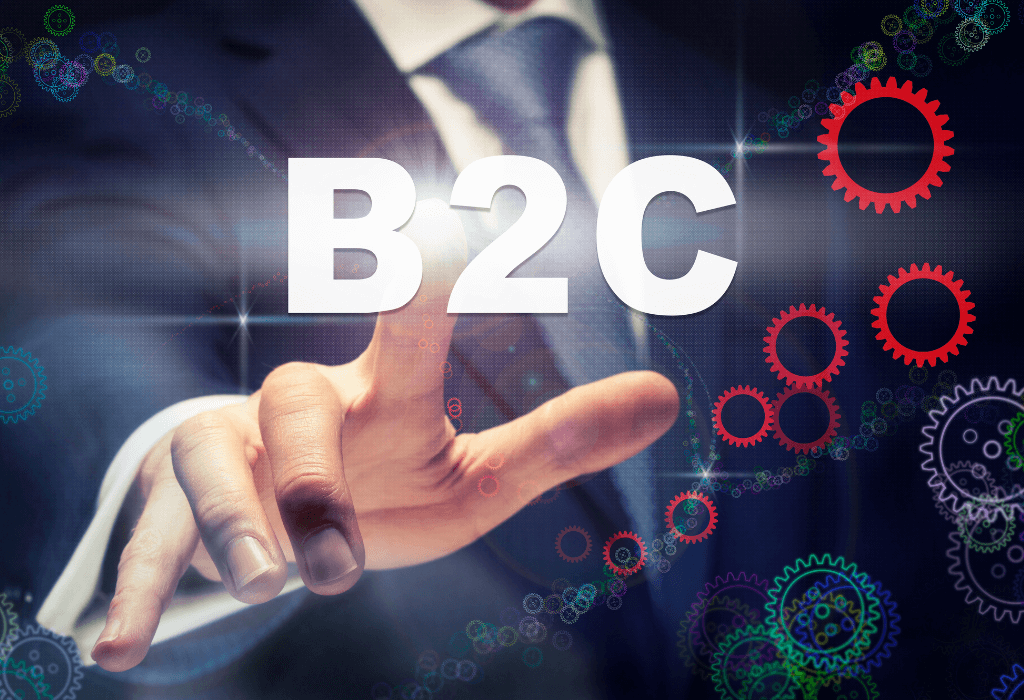B2C (Business To Consumer) is considered one of the transaction forms between businesses and consumers. This is also the most popular sales service model and is widely applied globally. In this article, let’s also find out what exactly B2C is, its types, benefits, and differences from B2B.
What is B2C eCommerce?
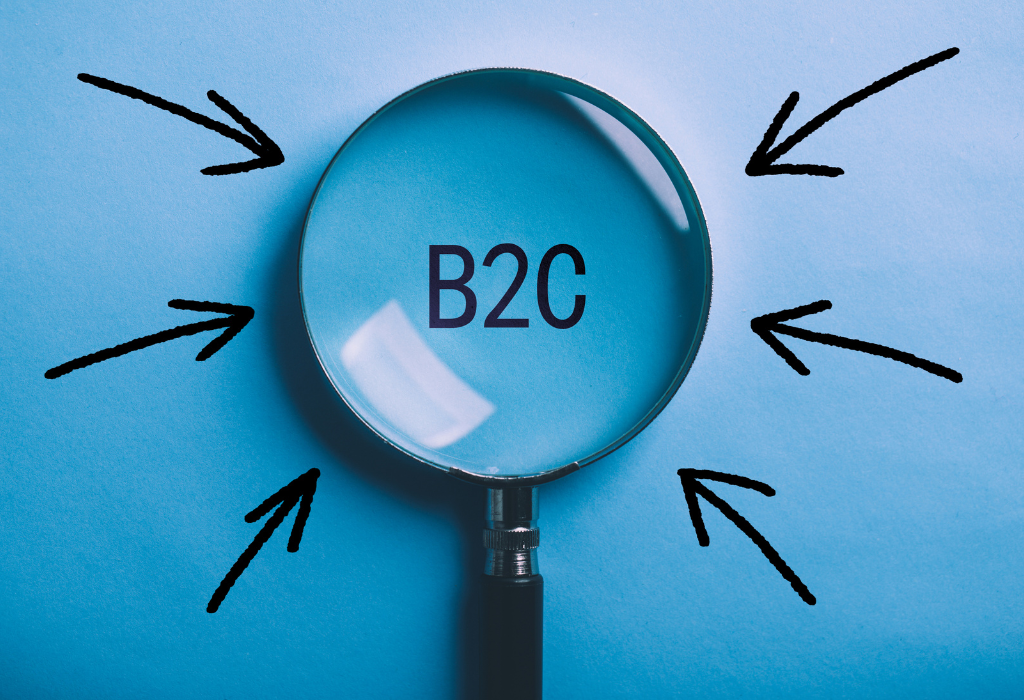
B2C eCommerce is a business model in the field of eCommerce where businesses sell directly to individual customers. In B2C eCommerce, businesses build and operate online stores to reach and sell products directly to consumers.
In e-commerce, B2C is a common business model where companies sell goods online to individual customers through websites, mobile apps, or other online shopping platforms. This allows customers to learn, compare, and purchase products or services easily from home without going to a brick-and-mortar store.
The Essence of The B2C Model
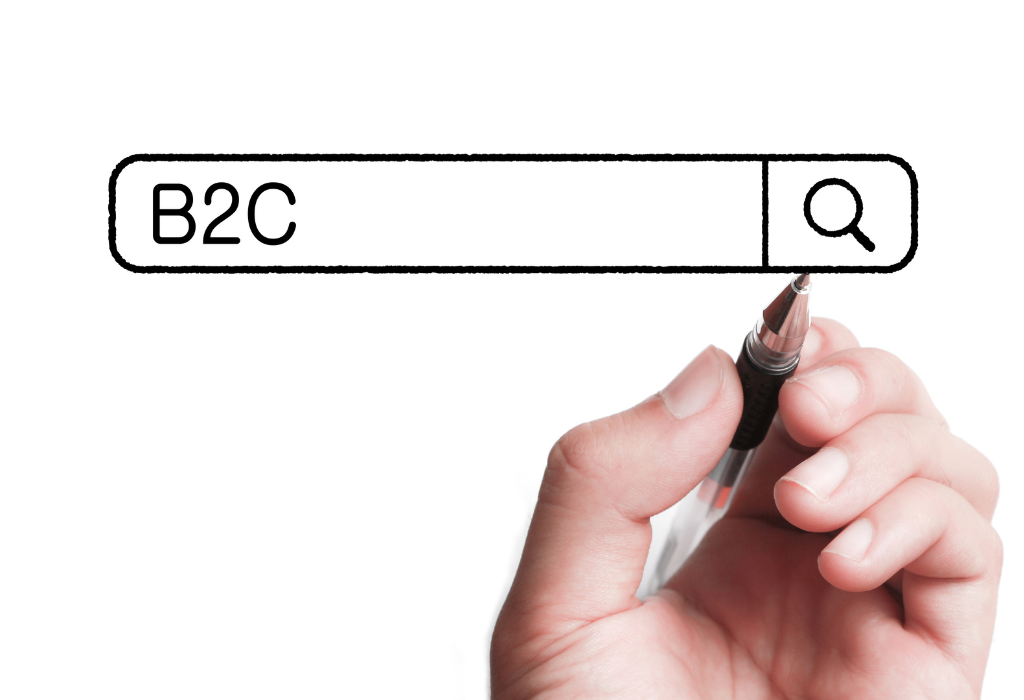
B2C is one of the most popular and widely known sales models in the world.
In the past, shopping at commercial centres, eating at restaurants, and paying for movies, merchandise, etc. were often seen as B2C business activities.
However, in recent years, the great development of information technology and the Internet has created a completely new form of B2C business in the form of e-commerce or selling goods and services over the Internet.
Any business that adopts the B2C model must maintain a good customer relationship to ensure customers return and increase sales.
Companies or businesses that apply the B2C model must offer marketing activities that target customers’ emotions and always consider customer consumption behavior as the main driving force. In addition, you must also grasp what customers want and motivate them to buy, and then the B2C model will be successful.
What is the Difference Between B2C and B2B?
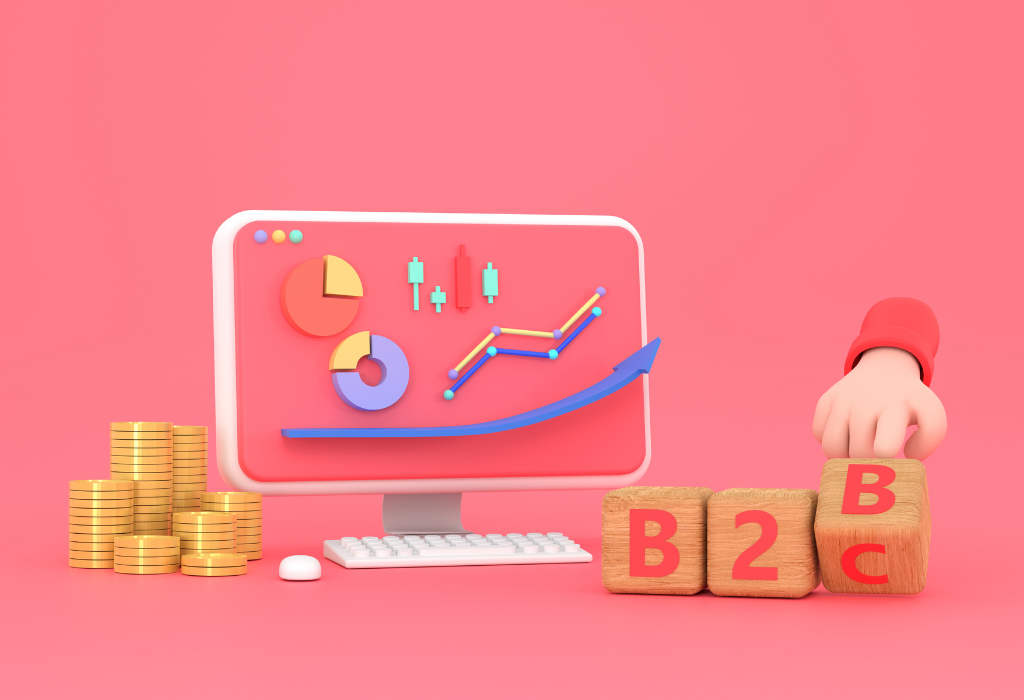
B2C (Business-to-Consumer) and B2B (Business-to-Business) are two business models with the goal of serving two different customers. Here are the key differences between B2C and B2B:
Speed
The turnaround time for a B2C business model transaction is usually quick, and the purchasing process is not overly complicated. While a B2B transaction requires a business to pursue it for a long time, it is necessary to build and nurture trust and commitment with customers who are businesses.
Therefore, an important factor for businesses following the B2C model is: the time for a transaction needs to be as fast as possible.
Contrary to the B2B model, businesses do not necessarily close sales in the shortest amount of time. The important thing here for a B2B salesperson is to close the order first because the transaction process is complicated and involves many small intermediary steps.
Decision Makers
For each B2C transaction, the person making the purchase decision is only one or two people. In contrast, there is an entire division in the business that will decide to make a purchase for a B2B transaction.
Leads
B2C businesses can access a large number of customer data sources to earn quality transactions. With the B2B model, the work will be more difficult. Often, collecting sales leads for B2B models requires you to have certain skills and a wide enough social network.
Revenue Earned In Each Sale Transaction
The revenue that businesses get in a B2C transaction will be much less than the value they get in a B2B transaction. Of course, a B2B transaction requires a business to put in more effort and time.
However, overall, the total revenue of B2C transactions is still greater than the total value of B2B transactions (because the number of customers in the B2C business model still accounts for a larger proportion of total sales transactions).
Number Of Suppliers And Purchasing Process
B2C transactions are usually quick. Goods are often targeted at mass customers, requiring little personalization per unit of product supplied to the market.
Meanwhile, customers in B2B transactions require the product to be tailored to the needs of their business. Therefore, the number of suppliers for the B2C model is overwhelming.
For more information about the B2B model, read our article: What is B2B? Benefits and Tips for Businesses
Benefits Of B2C
The benefits of a B2C business model in e-commerce are diverse and can bring many advantages to both businesses and consumers. Let’s take a look at some of the important benefits of B2C:
Cost Efficiency
B2C models can often reduce costs compared to traditional retail. Businesses can save on costs associated with physical store maintenance, inventory management, and personnel. This can lead to competitive pricing and cost savings, which can be passed on to the customer.
Direct Customer Access
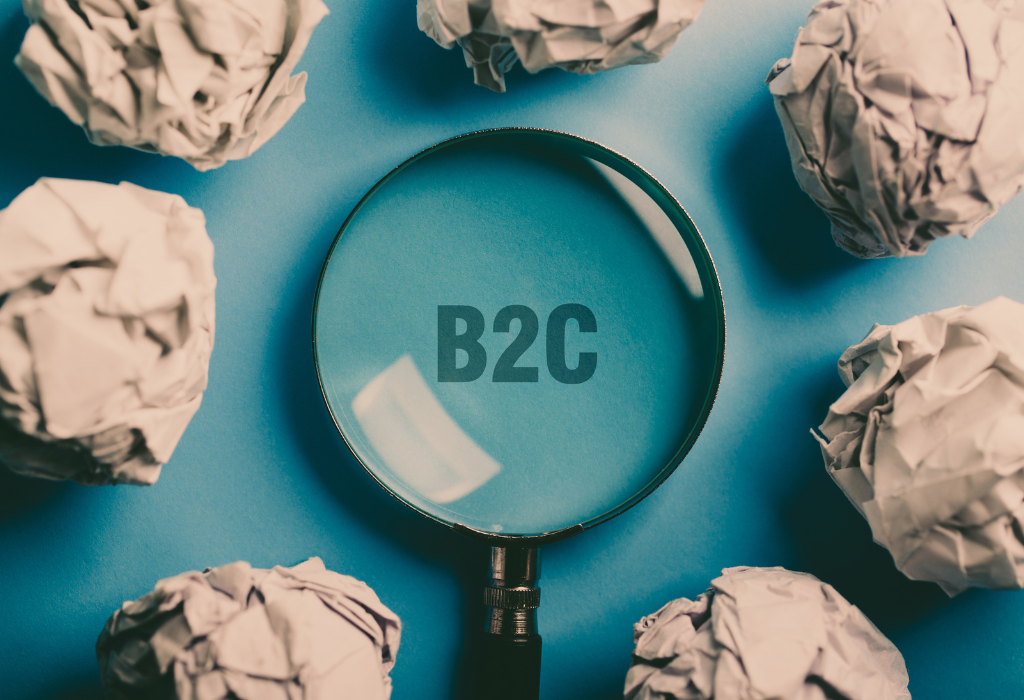
B2C allows you to directly interact with your customers in many ways, e.g., via email, SMS, and push notifications. You are free to choose and experiment to find the best way to communicate with your customers. From there, it is used to increase the frequency of customers visiting your sales website and convert a large number of visitors into loyal customers.
Reach More Customers
The use of social networks and online shopping is no longer strange to the majority of customers today. This is an opportunity to grow your business and reach customers on a global scale.
At the same time, the number of people using mobile phones has also increased significantly. It also means that you can easily run online marketing campaigns right on your phone. It costs too much to advertise on outdoor billboards.
Short Sales Cycle
The B2C model has a short sales cycle, so customers won’t spend too much time making a purchase. Moreover, customers are not limited in terms of time and place to shop, so you can improve the efficiency of your 24/7 ordering service through this feature. Which most online stores are. This is considered one of the most useful measures to optimize the consumer experience.
Transparency And Easy Evaluation
In the B2C model, information about products, prices, reviews, and feedback from customers is easily accessed and shared. This helps consumers evaluate and compare products or services before making a purchase. Businesses can also use feedback from customers to improve the quality of their products and services.
What Are the Types of B2C Models?
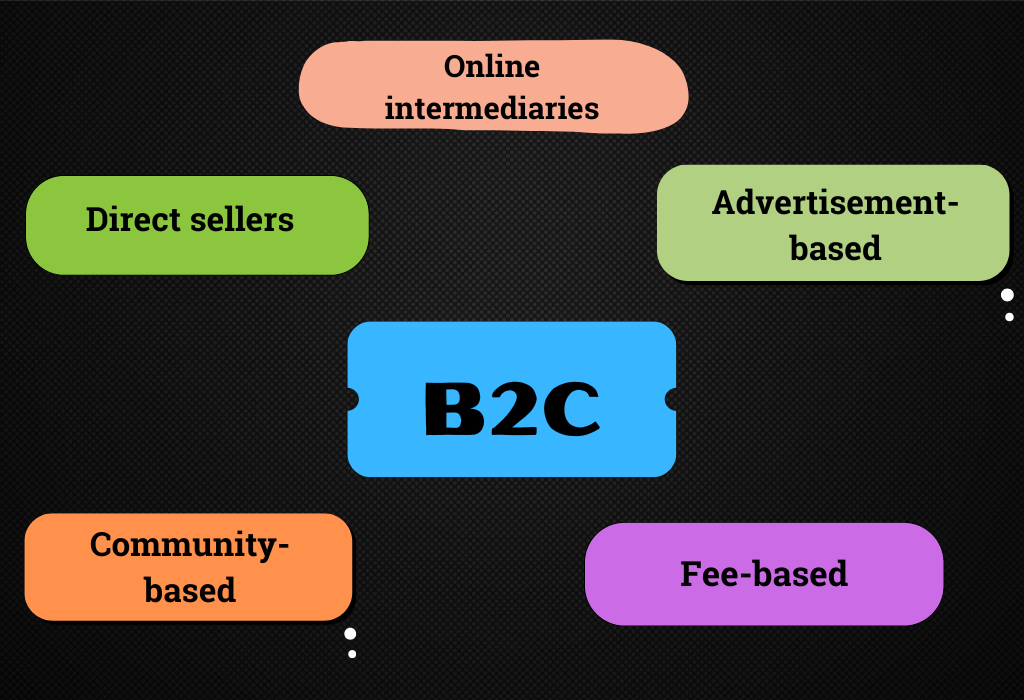
In the B2C model, there are several types of models that businesses can adopt to sell their products or services directly to individual consumers. There are five common types of B2C e-commerce businesses:
Direct sellers
Direct sellers are what most people think of when they hear B2C e-commerce. The vendors here can be small businesses, microbusinesses, or simply online versions of groceries.
For example, Zara’s online store sells Zara-branded specials. Other stores, like Walmart and Costco, sell products from all sorts of brands, but they’re still direct sellers.
Online intermediaries
Online intermediaries are mediators who utilize their websites to connect businesses with potential clients. Online intermediaries do not own any items, services, or brands, and their sole purpose is to connect sellers and buyers.
For instance, Etsy allows individuals and small businesses to sell their art products and services on the Etsy website under their own brands. The customer can then visit the website and buy directly from the seller.
Advertisement-based
Advertisement-based e-commerce sites do not have any products or services of their own. Instead, they sell ads for products and services that other businesses own. Over time, as these sites became more popular, they began to be seen as influencer websites promoting other businesses.
The Huffington Post and Guardian are examples of this type of e-commerce model, in which both sites post ads for products and services sold by other businesses.
Community-based
Social networking sites like Facebook, Instagram, or TikTok create online communities based on likes or shares. This makes it easy for marketers and advertisers to capture the product needs of consumers and reach them directly through ads based on psychology, demographics, geographic location, etc.
Fee-based
Direct-to-consumer websites or apps like Netflix charge a fee for consumers to access their content. The site may also offer free content, but there are limits on where you can continue. If you continue to use the service, you will have to pay most of the costs. The New York Times and other major newspapers often use a paid B2C business model.
What Is B2C Dropshipping?
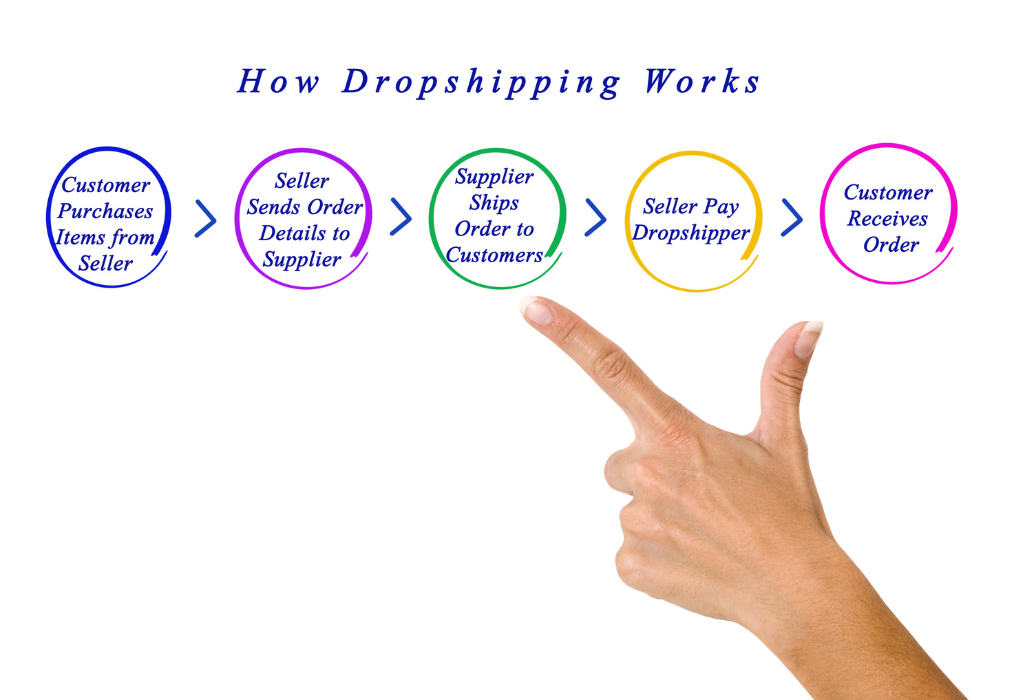
B2C Dropshipping is a business model in the field of e-commerce in which businesses sell online directly to individual customers without owning or managing the warehouse or the delivery process.
In the B2C Dropshipping model, the business does not have to produce or hold inventory. Instead, when an order is received from a customer, the business will transfer the order information and shipping address to the supplier or partner distributor. The supplier will then pack and ship the goods directly to the customer.
Best B2C Marketing Strategies

An effective B2C marketing strategy can vary depending on your industry and specific business goals. Here are some suggestions for the best B2C marketing strategies you can adopt:
Social Media Marketing
Use social networks to reach and interact with customers. Build a multi-channel marketing campaign on platforms like Facebook, Instagram, Twitter, and LinkedIn to create brand awareness and engage with potential customers.
Email marketing
Email marketing is an effective way to nurture and convert leads—potential customers—into real customers. However, this is not a game of chance as to whether your message will be caught in the spam filter or not. Instead, email marketing is an automated process that targets specific leads and customers with the goal of influencing their purchasing decisions.
Email marketing success is measured by open and click-through rates, so the strategy will work when it’s used in large-scale email marketing campaigns.
Content Marketing
Create quality and engaging content such as articles, images, videos, or interactive content to capture customer interest. Make sure the content reflects the values and benefits of your product or service.
Influencer Marketing
Collaborate with influencers or well-known people in your business who have a large following. They may help advertise your products or services to their target audience, leveraging their credibility and influence to boost brand visibility and sales.
Promotions and Incentives
Create promotions, special offers, and coupons to increase purchase appeal for customers. This could include product discounts, free shipping, freebies, or membership programs.
Mobile Marketing
Make your mobile marketing efforts more effective. To reach clients on their smartphones and tablets, establish a mobile-responsive website and mobile apps, and employ mobile advertising networks. To send personalized and relevant marketing messages, use location-based targeting and mobile-specific features.
Paid Media Advertising
Paid Media Advertising is a tool that companies use to increase their website traffic through paid advertising. One of the most popular methods is pay-per-click (PPC).
By bidding on relevant keywords, you can show ads prominently on search engine results pages, ensuring your brand appears when potential customers are actively searching. Search for products or services that are similar to yours.
Final Thoughts
For the sales of individuals or businesses to be effective, it is essential to learn and refer to business models like B2C. With B2C, businesses can reach and serve consumers directly, creating a convenient and personalized shopping environment. This brings significant benefits to both parties, creating convenience, increasing interactions, and building long-term relationships.
Through the above sharing, we, at Shineapps, hope that you have a better understanding of what B2C is and know more ways to apply this model.



